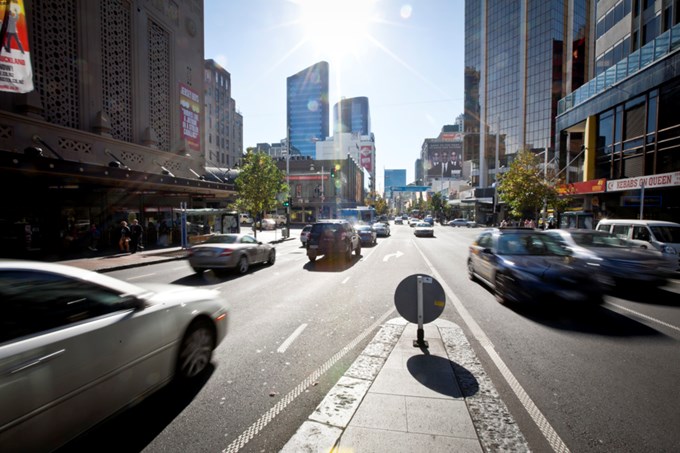Auckland Transport (AT) is looking at lowering speeds in the city centre, to improve road safety for the large number of people walking, cycling and living in the area.
A 30km/h zone is proposed and will be consulted on as part of a speed bylaw review in November.
The project is part of AT’s work to improve road safety. In Auckland, one person dies and two are seriously injured on our roads each week.
AT’s Group Manager Network Management and Safety, Randhir Karma, says many of the crashes in the city centre involve vulnerable road users.
“84 per cent of all crashes involve vulnerable road users. Nearly half of the crashes involve people walking and this is not acceptable.
"If a person walking is hit by a vehicle travelling at 30km, the chance of dying is 10 per cent. At 50km, the chance of dying is 80 per cent," he says.
AT is currently determining the exact locations for the start of the lower speed limit and what physical changes would need to be implemented. The locations would be included in the bylaw consultation.
“The existing average speeds along the main roads are generally below 30km/h and journey times are unlikely to be impacted, however, there are points within the city centre that have higher speeds.
“These are not appropriate when we have a high number of people walking and cycling,” Mr Karma says.
Improving road safety
2.2 per cent of death and serious injury crashes happened in the city centre in 2017. In the last five years, it was three per cent. This is significant given the 4km2 size of the area.
“We are working closely with our partners, including Auckland Council, NZ Police, NZTA and other organisations, on our road safety and speed management programmes to deliver road safety improvements across the region.”
AT is committed to reducing death and serious injury on our roads by 60 per cent in the next 10 years. $700 million, part funded by the Regional Fuel Tax, will be invested in improvements.


